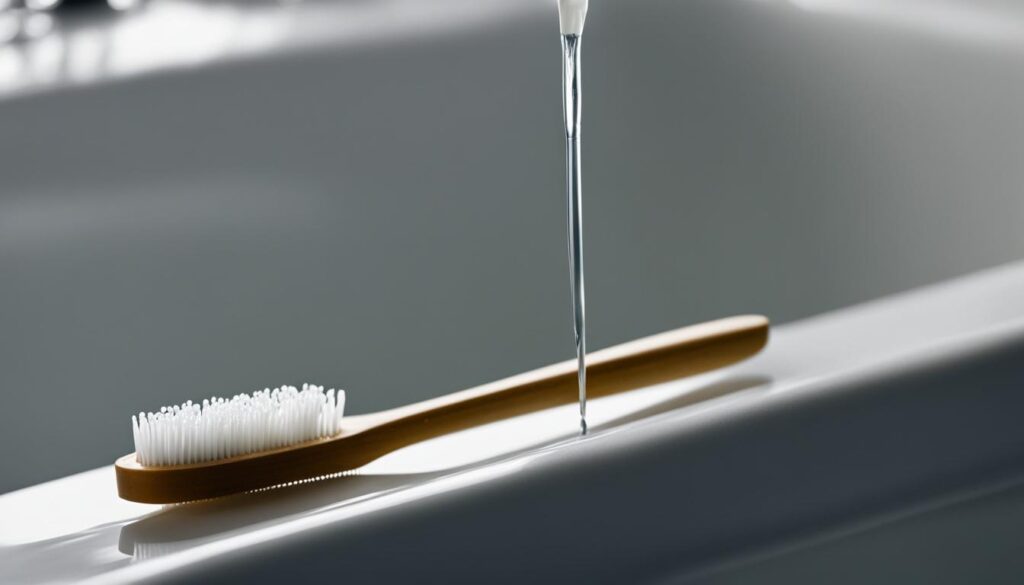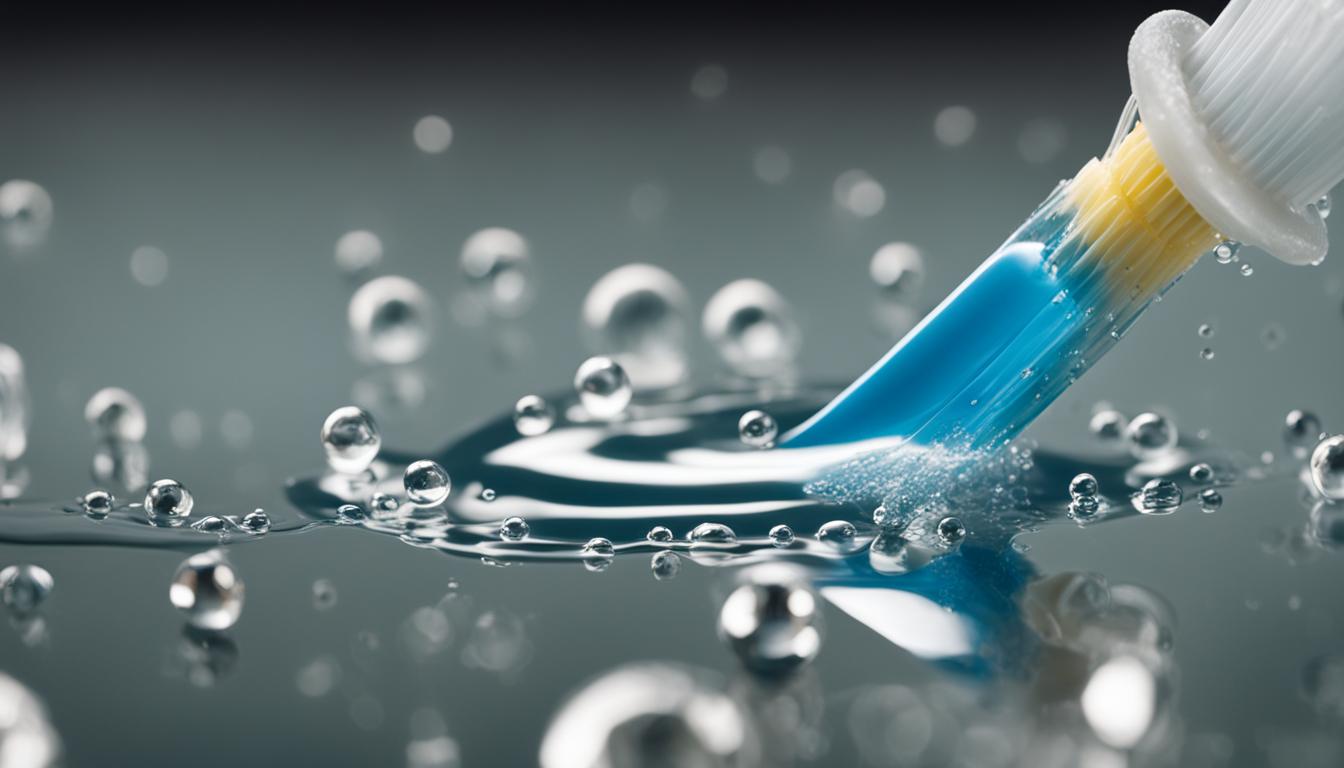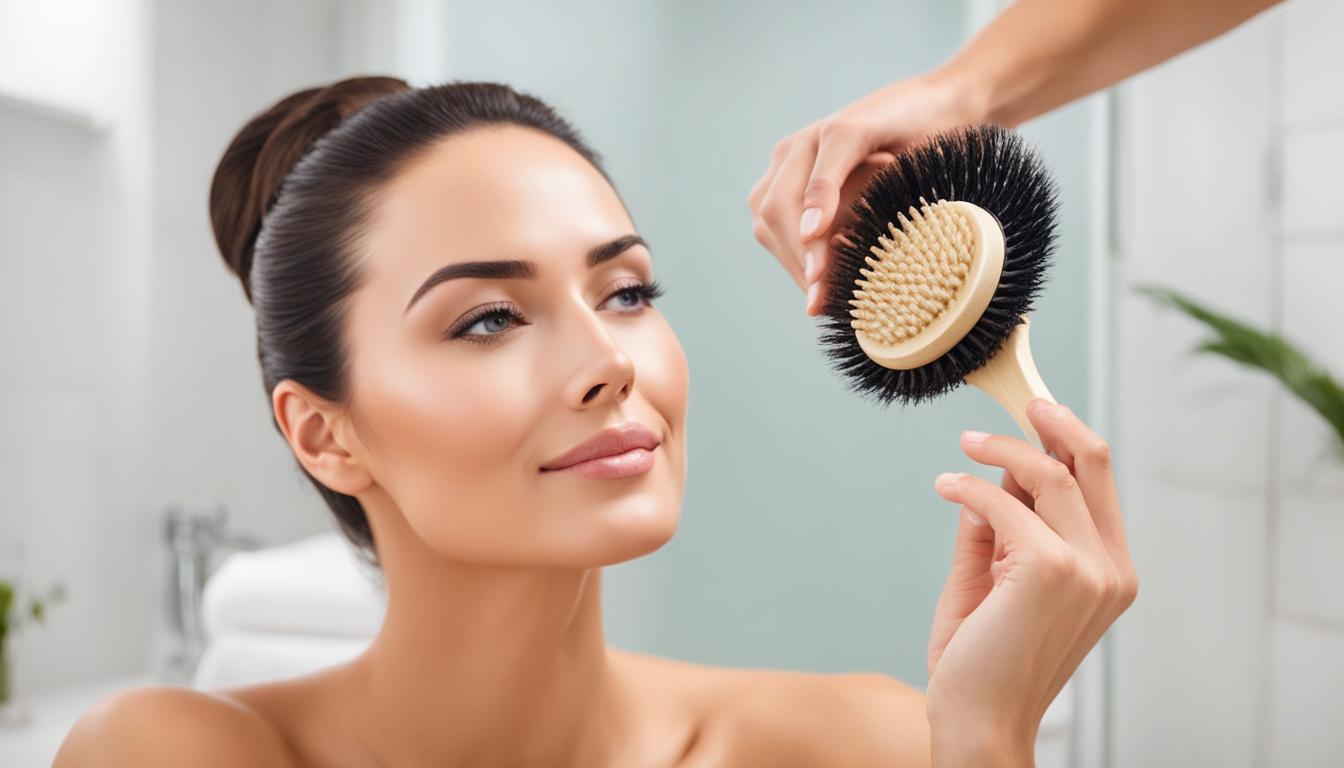Hydrogen peroxide is a widely available and affordable household staple, often used as a disinfectant to clean wounds and minor cuts. But what about its benefits for **oral hygiene**? Have you ever wondered: does soaking your toothbrush in hydrogen peroxide help in keeping it clean? With proper oral care as a priority, it’s worth exploring the **benefits of soaking your toothbrush in hydrogen peroxide** to ensure a cleaner, bacteria-free experience.
Contents
- 1 The Bacterial Landscape of Your Toothbrush
- 2 Hydrogen Peroxide: A Reliable Disinfectant?
- 3 How to Soak Your Toothbrush in Hydrogen Peroxide
- 4 Alternative Methods for Disinfecting Toothbrushes
- 5 Risks and Precautions When Using Hydrogen Peroxide
- 6 Conclusion
- 7 FAQ
- 7.1 Does soaking a toothbrush in hydrogen peroxide help with oral hygiene?
- 7.2 How can I use hydrogen peroxide to disinfect my toothbrush?
- 7.3 What precautions should I take when using hydrogen peroxide to clean my toothbrush?
- 7.4 Are there alternative methods for disinfecting toothbrushes?
- 7.5 How often should I replace my toothbrush?
- 8 Source Links
Key Takeaways
- Hydrogen peroxide can effectively disinfect toothbrushes, removing lingering bacteria.
- A simple mixture of 3% hydrogen peroxide solution and water can be used for soaking.
- Soaking your toothbrush for 15 minutes is recommended to avoid damaging the bristles.
- Always rinse your toothbrush thoroughly with water after soaking in hydrogen peroxide.
- Regular toothbrush maintenance contributes to better oral hygiene and overall health.
The Bacterial Landscape of Your Toothbrush
Your toothbrush may appear clean, but the bristles and handle are home to various microorganisms, making hydrogen peroxide and oral health a relevant association. Bacteria from the mouth, as well as potentially illness-causing pathogens like the flu virus, can congregate on your toothbrush. The moist environment serves as a breeding ground for these germs, emphasizing the importance of proper toothbrush disinfection with hydrogen peroxide.
In most cases, the bacteria levels on a toothbrush will not lead to oral infections; however, maintaining cleanliness can help minimize any risk associated with bacterial contamination. It’s essential to understand the significance of thorough toothbrush disinfection and the potential dangers of ignoring this aspect of oral hygiene.
| Location | Common Bacteria | Potential Health Risk |
|---|---|---|
| Bristles | Streptococcus mutans, Lactobacillus, Pseudomonas | Plaque buildup, tooth decay, gum disease |
| Handle | Staphylococcus aureus, Escherichia coli | Skin infections, gastrointestinal illnesses |
| Environment | Influenza, SARS-CoV-2 | Flu, respiratory illnesses |
Considering the different types of bacteria that can thrive on your toothbrush, it’s crucial to take the necessary steps to ensure proper disinfection. Integrating hydrogen peroxide into your oral healthcare routine can be an effective method to eliminate these germs and keep your toothbrush clean.
Hydrogen Peroxide: A Reliable Disinfectant?
Hydrogen peroxide is a popular and reliable disinfectant for hydrogen peroxide toothbrush sterilization. It owes its effectiveness to its powerful antibacterial properties, which makes it an ideal solution for cleaning toothbrushes and maintaining oral hygiene. Numerous studies have demonstrated that soaking a toothbrush in a 3% hydrogen peroxide solution can significantly reduce bacterial contamination. One of the greatest advantages of using hydrogen peroxide for toothbrush cleaning is that it is commonly found in most medicine cabinets, making it a practical and easily accessible option for regular toothbrush maintenance.
Let’s take a closer look at the antimicrobial properties of hydrogen peroxide and its effectiveness in reducing toothbrush contamination:
- Antimicrobial activity: Hydrogen peroxide is a powerful oxidizing agent, which enables it to break down bacterial cell walls and destroy various pathogens, making it ideal for toothbrush disinfection.
- Effectiveness: The use of a 3% hydrogen peroxide solution has been proven to effectively eliminate a wide range of toothbrush contaminants, including Streptococcus mutans, Candida albicans, and Escherichia coli. This high level of efficacy means that hydrogen peroxide is a dependable option for toothbrush sanitization.
- Accessibility: Consumers will likely already have hydrogen peroxide in their homes, as it is a staple in first aid kits and is frequently used for other household disinfection tasks. This easy access makes it a practical choice for maintaining a clean toothbrush.
As a result of these factors, hydrogen peroxide emerges as an excellent option for toothbrush sterilization. It is not only effective and accessible but also simple to use—just soak your toothbrush in a solution of 3% hydrogen peroxide for a few minutes to effectively reduce bacterial contamination.
“Hydrogen peroxide is one of the most reliable and effective methods for toothbrush sterilization, owing to its powerful antibacterial properties.”
In conclusion, hydrogen peroxide is an excellent solution for those looking to keep their toothbrushes clean and bacteria-free. This readily available disinfectant is a practical choice for regular toothbrush maintenance, providing a level of cleanliness that promotes good oral health.
How to Soak Your Toothbrush in Hydrogen Peroxide
To maintain excellent oral hygiene and minimize harmful bacteria, toothbrush disinfection with hydrogen peroxide is a recommended method. This simple process helps eliminate microorganisms that can lead to poor oral health. Here’s a step-by-step guide to help you disinfect your toothbrush effectively.
Step-by-Step Toothbrush Disinfection
- Pour enough 3% hydrogen peroxide solution into a small container to cover the bristles of the toothbrush.
- Place the toothbrush head into the solution and soak for at least 5 minutes.
- Remove the toothbrush from the solution and rinse it thoroughly under running water to remove any residue.
Following these simple steps can significantly reduce the presence of harmful bacteria on your toothbrush.
Frequency and Duration: Best Practices
To maintain optimal toothbrush hygiene, it’s essential to know how to soak the toothbrush in hydrogen peroxide for the right amount of time. Although it may be tempting to leave your toothbrush in the solution overnight, a 5-minute soak is sufficient and avoids potential damage to the bristles. Implementing this practice weekly, or more frequently during illness, can aid in maintaining a sanitized toothbrush.
Aftercare: Rinsing and Drying
After soaking your toothbrush in hydrogen peroxide, there are a few essential aftercare steps to ensure a clean and hygienic brushing experience.
- Rinse: Rinse the toothbrush well to remove any remaining hydrogen peroxide solution. This ensures that you don’t taste the disinfectant when you brush your teeth.
- Shake: Gently shake off excess moisture from the toothbrush to help it dry faster.
- Air Dry: Proper air drying of the toothbrush is crucial. Store it in an upright position away from other toothbrushes. A well-ventilated area helps prevent bacterial regrowth.
By incorporating these best practices for toothbrush disinfection with hydrogen peroxide into your oral care routine, you can effectively safeguard your dental health and overall wellbeing.
Alternative Methods for Disinfecting Toothbrushes

While hydrogen peroxide is a popular method for toothbrush disinfection, there are several alternative methods to consider for maintaining a clean toothbrush. Each approach has its own unique effectiveness and limitations in terms of bacteria elimination.
Some common alternative toothbrush disinfection methods include:
- UV sanitizers
- Antibacterial mouthwash
- Baking soda solutions
- White vinegar soaks
- Denture cleaners for toothbrushes
Let’s explore each of these in more detail:
| Method | Effectiveness | Limitations |
|---|---|---|
| UV Sanitizer | High | Cost, power source needed, limited space for multiple brushes |
| Antibacterial Mouthwash | Moderate | Possible taste transfer, not designed specifically for toothbrush disinfection |
| Baking Soda Solution | Moderate | Possible residue, less effective than hydrogen peroxide or UV sanitizer |
| White Vinegar Soak | Moderate | Possible taste transfer, less effective than hydrogen peroxide or UV sanitizer |
| Denture Cleaner | Moderate to High | Cost, not designed specifically for toothbrushes |
In addition to these alternative toothbrush disinfection methods, it’s crucial to maintain proper toothbrush care through rinsing with hot running water after each use and keeping the toothbrush in a clean, dry environment to avoid bacterial growth. Furthermore, make sure to regularly replace your toothbrush, especially after being sick.
Though hydrogen peroxide offers an effective and affordable toothbrush disinfection method, you can choose from a variety of alternative solutions to maintain your oral hygiene. With each method carrying its own advantages and drawbacks, personal preference and convenience ultimately dictate the ideal choice.
Risks and Precautions When Using Hydrogen Peroxide
Though hydrogen peroxide has proven to be an effective disinfectant for toothbrushes, it’s important to understand the potential risks and take proper precautions when using this solution.
Understanding Potential Toothbrush Damage
Using hydrogen peroxide for toothbrush sanitization can yield positive results; however, exceeding the recommended soaking time may lead to toothbrush damage. Overuse or prolonged soaking can potentially harm the bristles, thus reducing the toothbrush’s effectiveness.
It’s crucial to ensure that the toothbrush is not soaked in hydrogen peroxide for extended periods, as this can have unintended consequences.
Abiding by the suggested soaking guidelines will help maintain your toothbrush’s usability without risking any adverse effects.
Safe Handling and Storage of Hydrogen Peroxide
In addition to understanding toothbrush damage, it’s vital to handle and store hydrogen peroxide safely. To preserve its potency, keep hydrogen peroxide away from sunlight and store it out of the reach of children.
- Store hydrogen peroxide in a cool, dark place to increase its shelf life.
- Ensure that children cannot access the stored hydrogen peroxide.
- Responsibly pour used hydrogen peroxide down the sink after disinfecting your toothbrush.
- Replace your toothbrush every three months or when it shows signs of wear to avoid reinfection after recovering from an illness.
By following these steps, you can effectively use hydrogen peroxide to sanitize your toothbrush without encountering any issues associated with its improper handling or storage. This will ultimately help you maintain good oral health by minimizing the impact of bacterial contaminants.
Conclusion
Soaking your toothbrush in hydrogen peroxide can prove to be a highly effective and affordable method for enhancing oral hygiene by reducing bacterial contamination. Regularly incorporating this practice into your dental care routine can significantly contribute to your overall oral health and well-being. In order to maintain a clean toothbrush, it’s important to be mindful of the proper technique, duration, and frequency when using hydrogen peroxide, while also considering alternative disinfection methods as needed.
Understanding the importance of maintaining oral hygiene and incorporating proper toothbrush care habits can help you avoid potential dental issues and contribute to your overall health. To complement the use of hydrogen peroxide, be sure to regularly replace your toothbrush—every three months or when showing signs of wear, and immediately after recovering from an illness to avoid reinfection.
In conclusion, understanding why you should soak your toothbrush in hydrogen peroxide and incorporating this simple yet crucial practice into your dental care routine can go a long way in ensuring optimal oral health. Staying consistent with these oral hygiene habits can have a lasting impact on your well-being and provide you with a clean, healthy smile.
FAQ
Does soaking a toothbrush in hydrogen peroxide help with oral hygiene?
Yes, soaking a toothbrush in hydrogen peroxide helps with oral hygiene by eliminating lingering bacteria that may not be removed by simple rinsing. A 3% hydrogen peroxide solution effectively disinfects toothbrushes and contributes to overall oral health maintenance.
How can I use hydrogen peroxide to disinfect my toothbrush?
To disinfect your toothbrush using hydrogen peroxide, pour a 3% solution into a container, enough to cover the head of the toothbrush. Soak the toothbrush for at least 5 minutes and then thoroughly rinse it to remove any residue before use. Do this weekly or more frequently during illness.
What precautions should I take when using hydrogen peroxide to clean my toothbrush?
Do not overuse or soak the toothbrush for too long, as it can damage the bristles. Always rinse your toothbrush thoroughly after soaking to remove any residual hydrogen peroxide. Store the hydrogen peroxide solution away from sunlight, and out of reach of children to ensure safe handling and storage.
Are there alternative methods for disinfecting toothbrushes?
Yes, alternative methods for disinfecting toothbrushes include UV sanitizers, antibacterial mouthwash, baking soda solutions, white vinegar soaks, and denture cleaning solutions. Additionally, it’s important to rinse the toothbrush with hot running water and store it in a clean, dry environment for natural cleanliness.
How often should I replace my toothbrush?
It is recommended to replace your toothbrush every three months or when showing signs of wear and immediately after recovering from an illness to avoid reinfection.





Leave a Reply